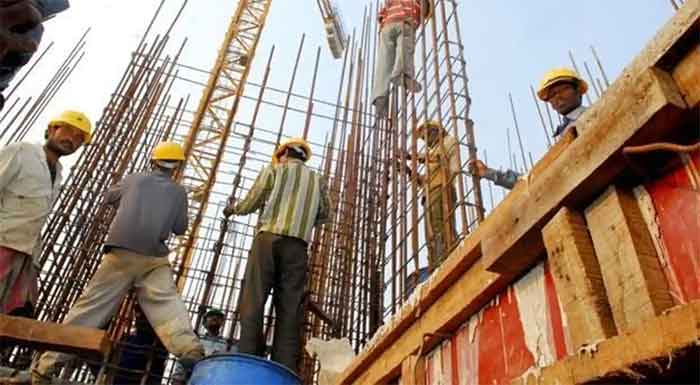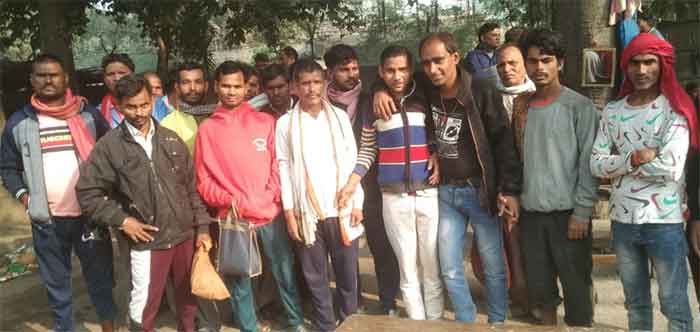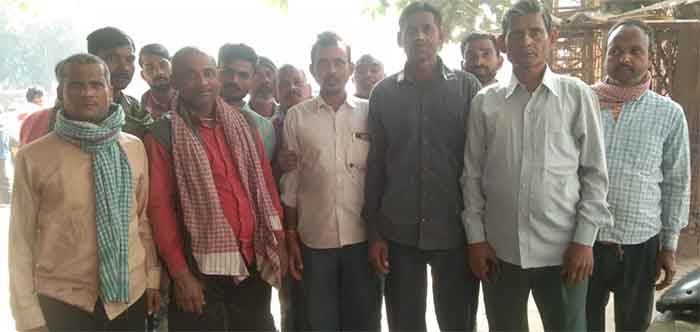
If workers struggle for a long time for protective legislation and also succeed in their aim, but the protective law is threatened by dilution and restrictive changes even before its benefits can reach most workers, then should they not re-assert to protect this law?
This is a question which construction workers face today in the context of the threat of the two protective laws enacted for their welfare and social security in 1996 as in the process of codification of labor laws important provisions of these laws are likely to be diluted and weakened. To give an example, safety provisions of the 1996 laws face considerable dilution.
The two laws passed, after a long phase of struggle, for building and construction workers (BOCWs) in 1996 were not exactly ideal laws, but still these went a long way in fulfilling their long pending demands. Briefly these provided for 1 to 2% cess to be imposed on all construction work beyond a limit and making available this fund to state BOCW boards ( to be set up in all states and union territories) for providing pensions, health and maternity benefits, educational support for children etc. to construction workers and their families.
However as initially the implementation was tardy, soon a second phase of struggle had to start, this time for the proper implementation of these laws. To their great credit, in these efforts the judiciary of several courts including some high courts and above all the Supreme Court were found to be quite helpful. Gradually 37 state BOCW boards were set up all over the country, and significant benefits started reaching workers. Although much remained to be done and the actual funds that became available and were used for worker welfare should have been several times higher if everything had gone strictly according to laws, still a good beginning had been made which had brought much hope.
However the recent codification of four labor laws by the union government and assimilating the various existing laws in these four codes has been a big blow for these efforts. The National Campaign Committee for Construction Labor (the NCC-CL), which had played an important role in the struggles for enacting legislation and later for its proper implementation, has argued in its more recent protests and memorandums that just when the two protective laws were in the process of being stabilized and strengthened, the future of some of their important provisions has become very uncertain in the process of the recent codification.
Their stand is very well-reasoned as already achieved gains of workers cannot be rolled back or threatened under the pretext of re-organizing laws, particularly when the re-organization or codifications of laws has taken place without proper consultation with affected workers and in fact all the time ignoring their protests and organizations. All the aspirations which millions of construction workers had from the hard-won existing welfare laws cannot just be brushed aside in a crual way just by uttering the mantra of codification.
Another area of concern appears to be that the new system that is being created is a highly centralized one with reduced role for states and reduced mechanisms of checks and balances, consultation and transparency. Workers placed a lot of trust in the physical registration cards provided to them with various details but this system is being diluted. The tripartite board mechanism appears to be moving in the direction of much more bureaucratization.
This together with the actual benefits reaching workers already getting reduced and funds entrusted with some boards being misused without proper budgeting priorities ( for example board funds being pre-empted for pollution related or other work-closure doles which need separate provision), which would leave very little funds for real welfare priorities as mentioned in the laws.
Hence the overall impression created is that of the two protective laws getting diluted and weakened even before these benefits could reach most workers. On this basis the NCC-CL feels that instead of being included in the labor codes, the two protective laws should continue to remain as before and the path ahead would be to ensure their better implementation as per directives given by the Supreme Court. This is in line with the principle accepted by most trade unions that there should be no dilution or reduction of hard-won labor rights, whether in the name of codification, or in any other way.
These objections of workers have a wider significance as many other sections of workers are adversely affected by the dilution of protections relating to boards based systems. Construction work has been regarded as the second most important source of livelihood in the country and any dilution of welfare laws for workers will adversely affect tens of millions of workers, including a significant number of women and below poverty line households.
Bharat Dogra is Honorary Convener, Campaign to Save Earth Now. His recent books include Man over Machine—A Path to Peace, Planet in Peril and A Day in 2071.















































